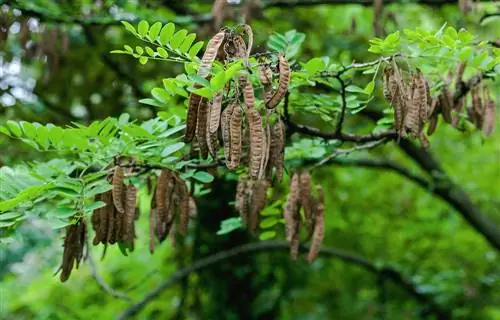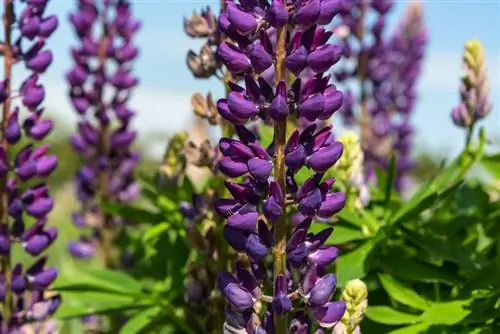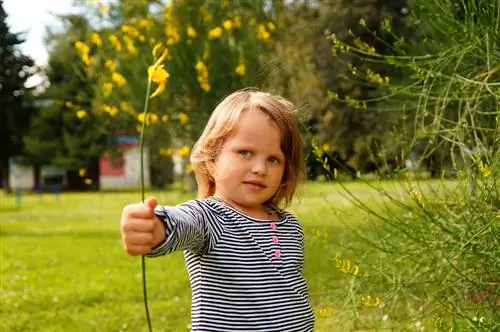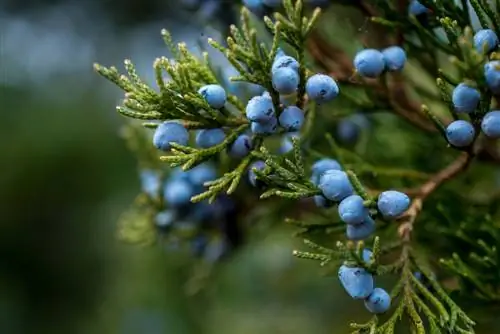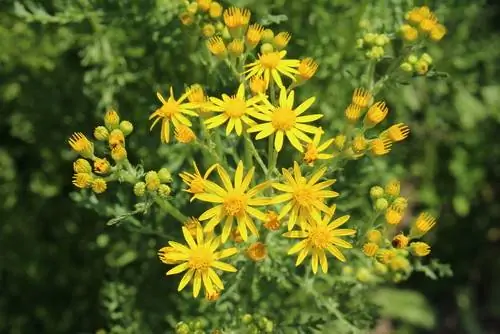- Author admin [email protected].
- Public 2023-12-16 16:46.
- Last modified 2025-01-23 11:21.
The black locust, a deciduous tree that is often found in public gardens or properties, has sharp thorns for a reason. The pricking spines not only serve as self-protection for the deciduous tree, but also protect animals from poisoning by preventing them from eating the flowers, leaves and bark. Because almost all components of the mock acacia are poisonous. Although the robinia visually enriches every garden, it should be treated with caution. Find out about the dangers and effects of the toxic property in this article to avoid the risk of poisoning.
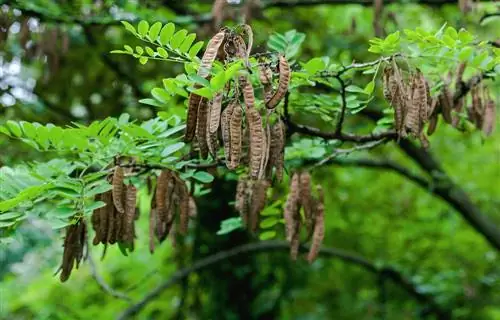
Is the robinia poisonous and what dangers does it pose?
The black locust is poisonous to humans and animals, with the main poisonous parts of the plant being the seeds, leaves and especially the bark. Poisoning through consumption can lead to nausea, abdominal pain, vomiting, rapid heartbeat, cramps and, in the worst case, death.
Who is the black locust poisonous to?
Robinias are poisonous to
- Animals
- and people
On the one hand, wild, free-living animals that feed on the bark of the tree are at risk. However, you should be particularly careful that horses or pets do not eat parts of trees. Also, never let your children play unsupervised near a mock acacia tree. Small children in particular tend to put objects in their mouths and of course do not yet know about the toxic effects.
Which parts of plants are poisonous?
non-poisonous plant parts:
Flowers
poisonous plant parts:
- Seeds
- leaves
highly poisonous plant parts:
Bark
Be careful when working on the black locust tree
Poisoning primarily occurs through consumption of robinia leaves, flowers or bark. However, as a precautionary measure when working with wood, you should always wear respiratory protection (€19.00 on Amazon). When sawing the branches of the robinia, there is a risk of inhaling dust particles.
Consequences of poisoning by robinia
The effects of poisoning become noticeable after about four hours. A dose of five seeds is probably enough to cause the following symptoms:
- Nausea-
- Stomachache
- Vomiting
- Heart racing
- Cramps
In the worst case, eating poisonous robinia components leads to death.

